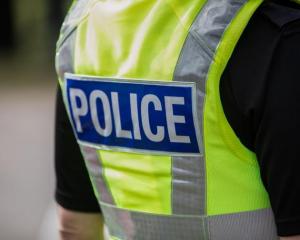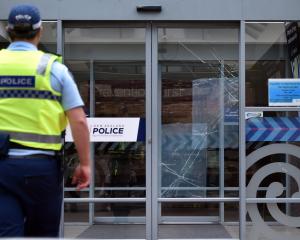Compared with modern guns, it was noisier, smellier and there was lots of smoke, but it added ''much more of a challenge'' to this year's duck-shooting, Derek Barrett said.
It was the first time the firearm had been used in the field for about 50 years, he believed. Mr Barrett, a diesel mechanic from Mayfield, spent the opening weekend of duck-shooting at his cousin's Matakanui farm.
His cousin, Mark Huddleston, said the gun was a family heirloom, belonging to the Huddlestons, Barretts and Rowleys. Its last owner was the men's uncle, Russell Rowley, of Chatto Creek.
''It's really nice to see it being used, rather than sitting in a case somewhere,'' Mr Huddleston said. Mr Barrett has a wealth of experience in black powder guns and has represented New Zealand in black powder pistol shooting. He cleaned up the antique firearm and then gingerly tested it before duck-shooting.
''I had it sitting in a tyre and then had a string rigged up to the trigger and sat a long way away ... ''Saltpeter used in the black powder is corrosive, so he was worried whether the inside of the barrels had been eroded, but fortunately it was in good order and passed with flying colours.
The gun has no maker's name on it, although it was probably made to order and they believed it dated back to the 1870s. The name of the gun dealer was G. Newton, of London. The wood used in the gun stock is possibly walnut, the men said, and the ramrod is made from ebony.
''Back in the early wars, a lot of people were killed from ramrods left in guns, overlooked in the hurry to get the guns reloaded, and then fired out at close contact,'' Mr Barrett said.
Compared with modern guns, it was noisier, smellier and there was lots of smoke, but it added ''much more of a challenge'' to this year's duck-shooting, Derek Barrett said.
It was the first time the firearm had been used in the field for about 50 years, he believed. Mr Barrett, a diesel mechanic from Mayfield, spent the opening weekend of duck-shooting at his cousin's Matakanui farm.
His cousin, Mark Huddleston, said the gun was a family heirloom, belonging to the Huddlestons, Barretts and Rowleys. Its last owner was the men's uncle, Russell Rowley, of Chatto Creek.
''It's really nice to see it being used, rather than sitting in a case somewhere,'' Mr Huddleston said. Mr Barrett has a wealth of experience in black powder guns and has represented New Zealand in black powder pistol shooting. He cleaned up the antique firearm and then gingerly tested it before duck-shooting.
''I had it sitting in a tyre and then had a string rigged up to the trigger and sat a long way away ... ''Saltpeter used in the black powder is corrosive, so he was worried whether the inside of the barrels had been eroded, but fortunately it was in good order and passed with flying colours.
The gun has no maker's name on it, although it was probably made to order and they believed it dated back to the 1870s. The name of the gun dealer was G. Newton, of London. The wood used in the gun stock is possibly walnut, the men said, and the ramrod is made from ebony.
''Back in the early wars, a lot of people were killed from ramrods left in guns, overlooked in the hurry to get the guns reloaded, and then fired out at close contact,'' Mr Barrett said.
He fashioned his own ramrod from a piece of dowel to protect the original.
He takes several minutes to load the weapon, first placing black powder in, using the ramrod to push down a wad, so there is no air, then loading it with lead shot and a cap, finally shooting the cap to fire the gun.
Although lead shot is now banned in this country when hunting waterfowl, an exemption applies for black powder muzzle-loaded shotguns.
Mr Barrett would like to see more people using ''family heirloom'' guns that are still in good working order.
''I'd really like to see a resurgence in their use. It is more challenging and you have to have patience to go through the procedure loading them, and clean it properly afterwards, but it adds quite a bit to the sport.''
And as for the verdict on its use?
''It actually killed better than the newer guns - cleaner and quicker,'' Mr Huddleston said.
It may have lacked all the ''bells and whistles'' of modern guns, and been slow to reload, but Mr Barrett got his ''share'' of the haul, the men said.










